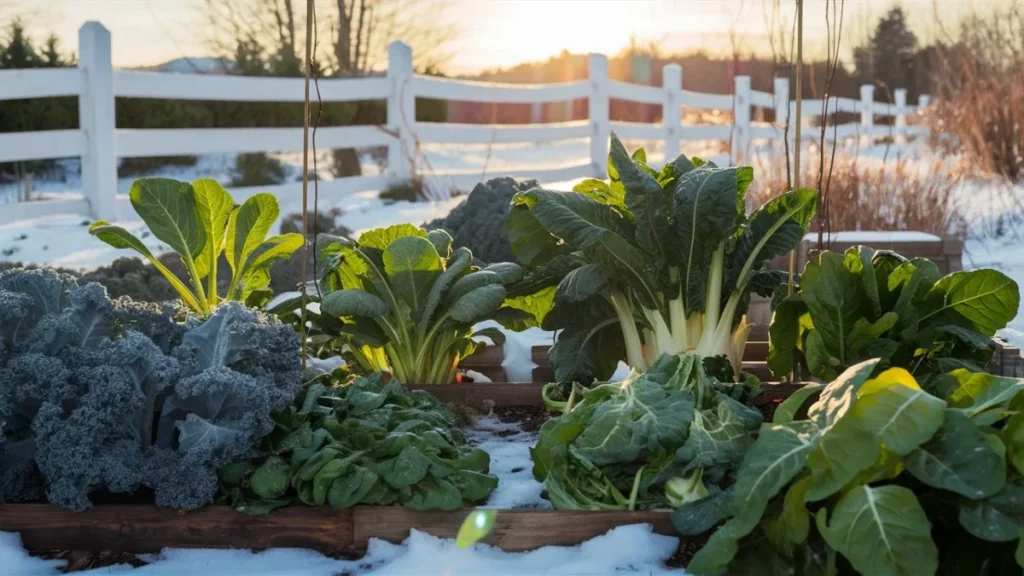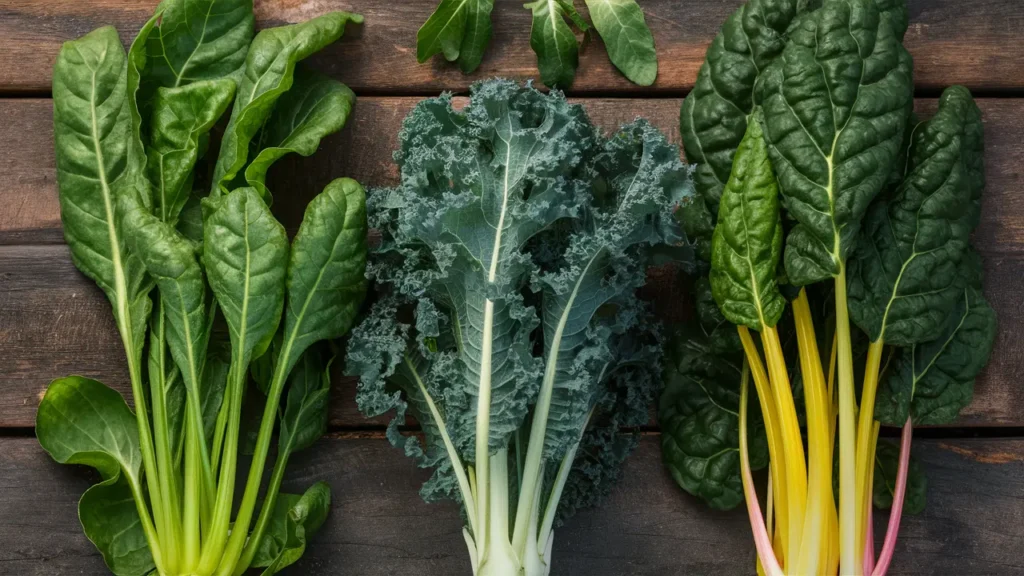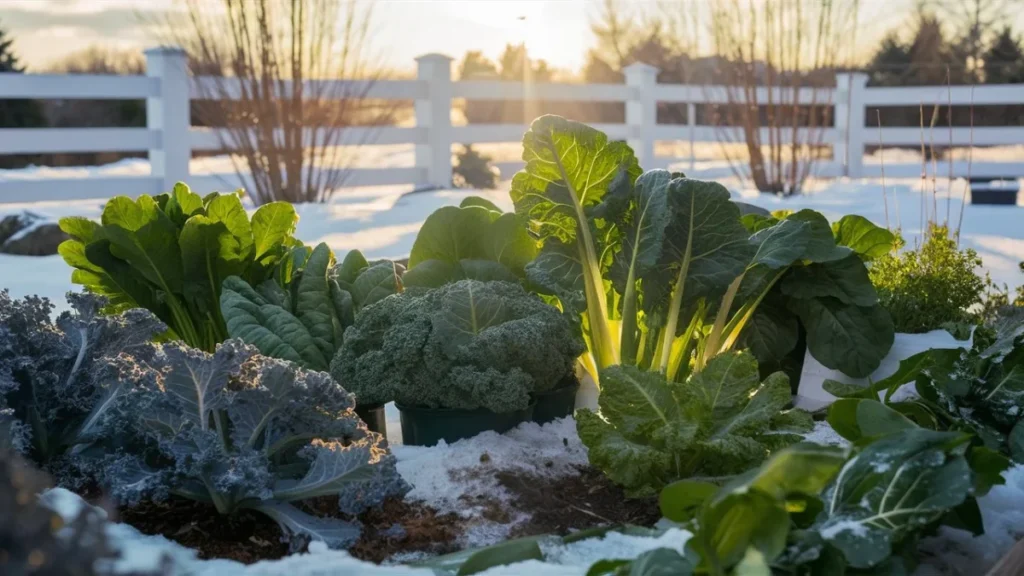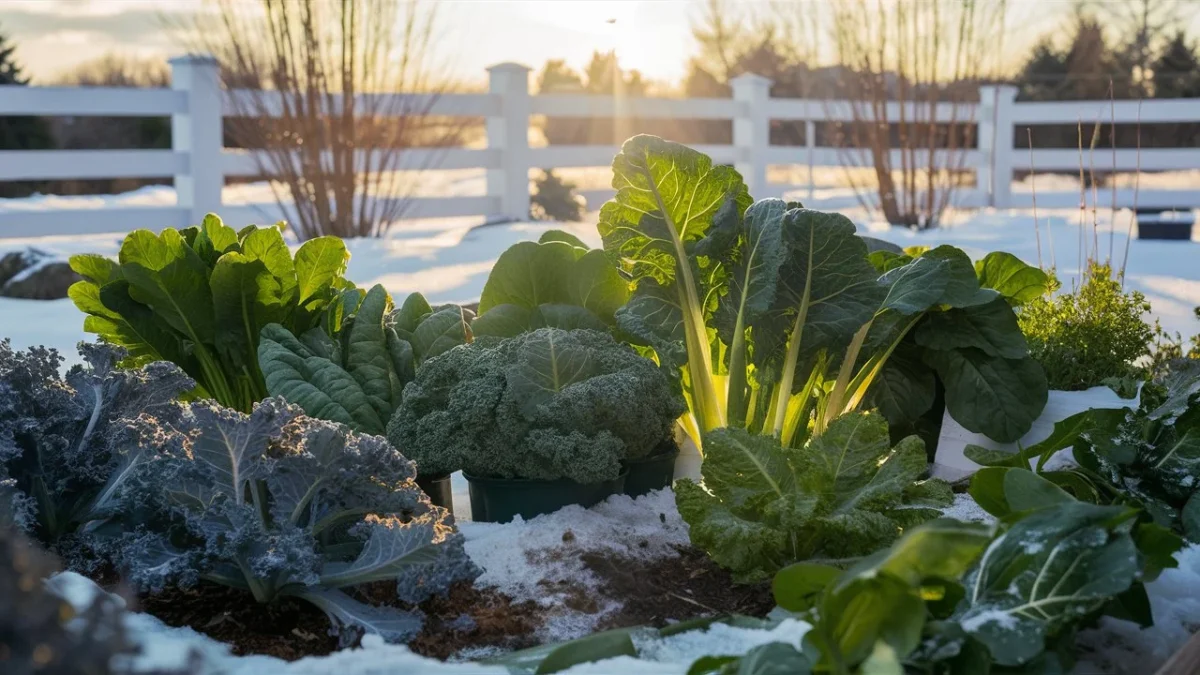In the world of survival preparedness, having a reliable source of fresh produce during the harsh winter months is crucial.
Winter gardening offers a sustainable solution, allowing you to grow your own food and maintain a consistent supply of nutritious vegetables throughout the year.
Whether you’re a seasoned prepper or just starting your journey, mastering the art of winter gardening can be a game-changer. Check out these winter gardening techniques to get started.
Table of Contents
Introduction to Winter Gardening

Gardening during the winter months presents a unique set of challenges, including cold temperatures, shorter daylight hours, and frozen soil. However, with the right techniques and hardy plants, you can overcome these obstacles and enjoy a bountiful harvest. Winter gardening not only provides you with fresh, nutrient-dense produce but also offers cost savings and extends your growing season.
Top 5 Winter Gardening Techniques

To ensure a successful winter garden, it’s essential to implement the following proven techniques:
Cold Frames
Cold frames are simple structures that create a miniature greenhouse environment, protecting your plants from harsh weather conditions. By trapping solar energy during the day and retaining warmth at night, cold frames provide a controlled environment for your plants to thrive.
- What is a cold frame? A cold frame is a transparent, box-like structure with a hinged lid that can be opened or closed as needed.
- How to build and use a cold frame: Construct a sturdy frame using wood or metal, and cover it with a transparent material like glass or rigid plastic. Place the cold frame in a sunny location, and open the lid during the day to allow ventilation and close it at night to retain heat.
- Best plants for cold frames: Leafy greens, root vegetables, and herbs are excellent choices for cold frames. For more hardy plant options, check out these high-calorie crops for containers.
Row Covers
Row covers are lightweight, breathable fabrics or plastic sheets that create a protective barrier over your plants, shielding them from harsh winds, frost, and extreme temperatures.
- Types of row covers: Choose from fabric row covers, plastic sheeting, or floating row covers (water-filled tubes that trap heat).
- Benefits of using row covers: Row covers can extend your growing season, protect plants from pests, and provide insulation during cold snaps.
- How to install and maintain row covers: Secure the row covers over your plants using hoops or stakes, ensuring proper ventilation and easy access for maintenance.
| Row Cover Material | Benefits | Drawbacks |
|---|---|---|
| Fabric | Breathable, reusable | May not provide enough insulation in extreme cold |
| Plastic Sheeting | Inexpensive, good insulation | Not as breathable, prone to condensation |
| Floating Row Covers | Excellent insulation, water-filled | More expensive, requires water source |
Mulching
Mulching is the practice of covering the soil around your plants with a protective layer of organic material, such as straw, leaves, or bark chips. This technique helps insulate the soil, retain moisture, and suppress weed growth. For more insights on maintaining healthy garden soil, check out our dedicated article.
- Types of mulch: Straw, leaves, bark chips, and other organic materials make excellent mulches for winter gardens.
- Benefits of mulching in winter: Mulching helps protect plant roots from freezing temperatures, retains soil moisture, and prevents soil erosion.
- How to properly mulch garden beds: Apply a 2-4 inch layer of mulch around your plants, being careful not to pile it too close to the stems or trunks.
Succession Planting
Succession planting is the practice of staggering your plantings to ensure a continuous harvest throughout the winter months. By planting at different intervals, you can take advantage of favorable growing conditions and extend your harvest window. If you’re looking for fast-growing vegetables to incorporate into your succession planting strategy, we’ve got you covered.
- What is succession planting? Succession planting involves sowing new crops every few weeks or months, rather than planting everything at once.
- Benefits of succession planting in winter: This technique ensures a steady supply of fresh produce, maximizes the use of available space, and minimizes gaps in your harvest.
- Tips for successful succession planting: Keep detailed records of your planting dates, monitor soil temperatures, and plan your plantings accordingly.
Choosing Hardy Plants

One of the keys to successful winter gardening is selecting plants that can withstand the harsh conditions of the colder months. Hardy plants are those that are naturally adapted to survive in low temperatures and are better equipped to tolerate frost, snow, and freezing conditions. For a comprehensive list of essential survival crops, be sure to check out our dedicated article.
- Characteristics of hardy plants: Hardy plants often have compact growth habits, deep root systems, and the ability to go dormant during extreme weather.
- Examples of hardy plants for winter gardens: Leafy greens like kale and spinach, root vegetables like carrots and beets, and brassicas like Brussels sprouts and broccoli are all excellent choices.
- Importance of choosing the right plants: By selecting hardy plants suited for your climate, you increase the chances of a bountiful winter harvest and minimize the risk of crop failure.
10 Hardy Plants for Winter Gardens

To ensure a successful winter garden, consider incorporating the following hardy plants into your planting plan:
Leafy Greens
Leafy greens like kale, spinach, and Swiss chard are incredibly resilient and can withstand frosty conditions. These nutrient-dense vegetables are not only hardy but also provide a valuable source of vitamins and minerals during the winter months.
- Kale: A superfood packed with vitamins A, C, and K, kale thrives in cool weather and can even survive light frosts.
- Spinach: Rich in iron and folate, spinach is a cold-hardy crop that can be grown in the winter with proper protection.
- Swiss Chard: With its vibrant stems and leaves, Swiss chard is a beautiful and nutrient-rich addition to any winter garden.
Root Vegetables
Root vegetables like carrots, radishes, and beets are perfect for winter gardening. Their edible roots grow underground, providing natural insulation and protection from harsh weather conditions. If you’re short on space, consider growing potatoes – a survival crop that can thrive in containers.
- Carrots: Sweet and crunchy, carrots are a cold-hardy crop that can be harvested throughout the winter months.
- Radishes: Fast-growing and pungent, radishes add a spicy kick to your winter meals and can tolerate light frosts.
- Beets: Nutrient-dense beets are not only hardy but also add a vibrant pop of color to your winter garden.
Brassicas
Brassicas, or cruciferous vegetables, are a diverse group of hardy plants that thrive in cool conditions. Many brassicas, such as Brussels sprouts, broccoli, and cauliflower, are well-suited for winter gardening. For a comprehensive guide on beneficial garden bugs that can help your brassicas thrive, check out our dedicated article.
- Brussels Sprouts: These miniature cabbages are frost-tolerant and can be harvested throughout the winter.
- Broccoli: With proper protection, broccoli can be grown in the winter, providing a nutritious source of vitamins and minerals.
- Cauliflower: Like its brassica cousins, cauliflower can withstand colder temperatures and produce tasty heads in the winter.
Alliums
Alliums, such as garlic, onions, and leeks, are hardy bulbs that can be planted in the fall and harvested during the winter months. These flavorful vegetables not only add depth to your winter dishes but also offer excellent storage potential. If you’re looking to grow herbs in buckets, consider adding some alliums to your container garden.
- Garlic: Planted in the fall, garlic is a cold-hardy crop that can be harvested in late spring or early summer.
- Onions: Onions are versatile and hardy, making them a great addition to any winter garden. They also offer long-term storage capabilities, which is a valuable asset for preppers.
- Leeks: With their distinct flavor and cold tolerance, leeks are a valuable crop for winter gardening. They can be harvested throughout the colder months, providing a fresh source of nutrients.
Preparing Your Garden for Winter
To set your winter garden up for success, proper preparation is essential. Follow these steps to ensure your garden is ready for the colder months:
- Cleaning up the garden: Remove any dead or dying plant matter, as well as weeds, to prevent pest and disease problems. Check out our article on common plant diseases to stay vigilant.
- Adding compost and fertilizers: Enrich your soil with nutrient-rich compost and appropriate fertilizers to provide your plants with the necessary nutrients for growth. If you’re looking for household items to use as fertilizers, we’ve got you covered.
- Protecting plants from frost and freezing temperatures: Implement frost protection measures such as row covers, cold frames, or mulching to insulate your plants from extreme cold. For more tips on avoiding gardening mistakes, be sure to check out our dedicated article.
Maintaining Your Winter Garden
Even after your winter garden is established, proper maintenance is crucial to ensure a bountiful harvest. Here are some important considerations:
- Watering requirements: Monitor soil moisture levels and water your plants as needed, being mindful of potential freezing temperatures. Avoid common watering mistakes that could harm your plants.
- Pest and disease management: Regularly inspect your plants for signs of pests or diseases, and take appropriate action to control any issues. Consider using natural pest killers or plants that repel pests for an organic approach.
- Harvesting and storage tips: Harvest your crops regularly to encourage continued production, and store your fresh produce properly to maximize its shelf life. Check out our guide on regrow fruits and vegetables for tips on extending your harvest.
Conclusion
Winter gardening is an invaluable skill for preppers and those seeking self-sufficiency. By implementing the top 5 winter gardening techniques – cold frames, row covers, mulching, succession planting, and choosing hardy plants – you can enjoy a steady supply of fresh, nutritious produce throughout the colder months. The 10 hardy plants highlighted in this article, including leafy greens, root vegetables, brassicas, and alliums, are excellent choices for your winter garden.
Embracing winter gardening not only ensures a reliable source of food but also provides a sense of empowerment and self-reliance. As a prepper, having the ability to grow your own food, regardless of the season, is a valuable asset in your survival toolkit.
Remember, winter gardening requires patience, diligence, and a willingness to adapt to changing conditions. By following the techniques and plant recommendations outlined in this article, you can overcome the challenges of winter gardening and reap the rewards of a bountiful harvest.
So, don’t let the colder months deter you from growing your own food. Embrace the art of winter gardening and take a step towards a more sustainable, self-sufficient lifestyle. Your winter garden will not only provide you with fresh, nutritious produce but also a sense of accomplishment and preparedness for whatever lies ahead.
For more gardening tips and tricks, be sure to check out our other articles on raised bed gardening, vegetables for small spaces, indoor gardening, and many more!


